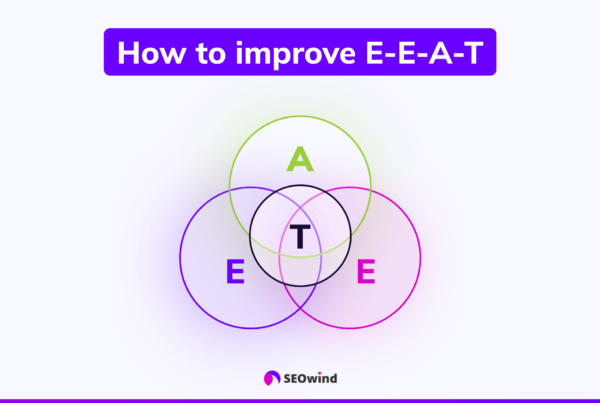Imagine creating a brand persona that breathes life into your business, communicates personally with your customers, and stands out from competitors. This dynamic element, known as the brand tone of voice, crafts the brand’s personality and values and redefines its online presence.
We’ll explore what it means to have an effective ‘brand tone of voice,’ why it is of enormous significance, how you can sculpt yours, and much more. This article aims to illuminate the concept, provide actionable steps, cite successful examples, and offer expert advice on avoiding pitfalls.
What is the Brand Tone of Voice?

When we talk about a brand’s “tone of voice,” we’re diving into something way deeper than just how a company sounds. It’s all about the brand’s personality, those little quirks and traits that come through in the way they write, speak, and engage with people on every platform. Think of it as the style or flavor that sets their messages apart, whether they’re being factual, commanding, friendly, or even a little funny. It’s basically the vibe that captures the heart of their corporate culture.
But here’s the thing: this tone only works if it’s consistent. When that same voice shows up in everything, from customer service emails to Instagram captions, it builds a sense of familiarity. Add in a touch of personalization here and there or the perfect tone for an ad campaign, and you get something that feels less like a company talking at you and more like a real conversation.
Crafting this tone goes beyond just picking the right words. It’s about sentence rhythms, word choices, and even how direct or casual they come across. A well-honed tone does more than just get a message across; it connects, resonates, and makes customers feel seen and understood. When done right, it’s the secret sauce to building those lasting customer relationships that every brand dreams of.
Simple way to define your Brand’s Tone of Voice
Finding the right tone for your brand’s voice can be easier with our free, GPT-powered tool. Simply input a sample of your content, and the AI will analyze how your brand communicates. Whether you’re refining your messaging or maintaining consistency across different platforms, the tool offers clear insights into what makes your brand’s tone unique.
Discover Your Brand Voice
Paste your content below to get a detailed analysis of your style, voice, and tone.
Why is Brand Tone of Voice Important in Marketing?
Brand tone of voice is paramount in marketing for several compelling reasons.
Consistency
First and foremost, a consistent brand tone of voice promotes recognition and fosters trust with your audience. This consistency should spread across all communication mediums, including social media platforms, advertisements, emails, or website content. Ensuring effective communication is such an integral part of your marketing strategy that the written tone remains uniform, allowing audiences to develop familiarity with your brand’s style – formal, friendly, humorous, or authoritative. Continuous engagement nurtures consumer relationships and fosters loyalty over time.
When you think about brands that have done well to maintain a regular ‘voice’ across their entire spectrum of communications – from their website copy to social media posts to their customer service interactions – specific names come to mind. These companies understand that consistency in brand voice is an underlying component that contributes to their business success.
Identification Of the Public
Countless competitors are vying for consumers’ attention. Branding tone of voice serves as a distinguishing factor between your company’s tone and others. A unique tonality facilitates easier identification by the public because it functions somewhat like an auditory logo. Just as people can immediately identify some logos simply by glancing at them, they can also perceive specific vocal tones and instantly relate them to a particular brand.
This immediate identification is crucial in an age flourishing with information overload, where consumers are barraged daily by numerous messages from various sources. In such instances, establishing substantial recall value becomes essential, which sound brand tonality ably assists with.
Differentiation from Competitors
Indeed, one key facet where brand tone comes into its own would be clearly differentiating you from competitors lurking everywhere operating, perhaps even in identical sectors targeting similar audiences. Employing distinctive tones helps project disparate personalities, showcase individuality, set apart your goods/services, make them more appealing, and directly resonate with certain sections of prospective customers who align closely with said perspectives.
Think about how subconsciously we discern differences between ourselves and others typically based on our speech attributes or writing styles; application-wise, slant holds true for businesses too, employing uniquely stylized voices allowing differentiation, thereby promoting healthy competition amongst market players and concurrently offering a variety of choices eluding generic monotony and benefiting end consumers remarkably in the long run!
Brand Voice vs Tone of Voice: What’s the Difference?
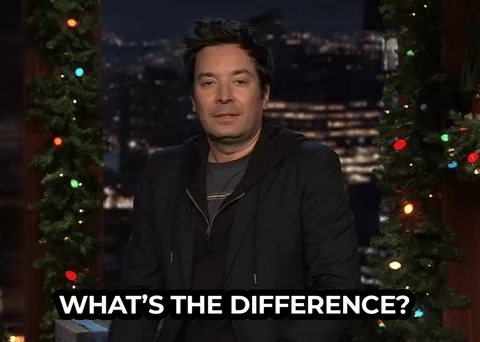
With both terms commonly used interchangeably, understanding what each connotes is essential as they bear significant weight in your branding strategy.
The Concept of Brand Voice
Branded as ‘voice brand’ or ‘brand voice,’ this concept encompasses more than just the spoken words associated with a brand. It refers to the unique personality that a business imbues into every aspect of its communications. This encapsulates all verbal and written interactions across platforms, from social media posts to customer service dialogues. For instance, if your business was personified, what would it sound like?
The term sees different interpretations, such as ‘what is a brand voice,’ expanding on how it shapes interactions between businesses and their target audiences. Expressive brand voice examples can help clarify how these principles are applied in real-world interactions.
Defining Tone of Voice
Conversely, the tone of voice (TOV) is an extension of a brand’s voice—essentially, how you hear them say things. Whether satirical, authoritative, casual, sarcastic tone or formal, these tonal variations subtly shape your brand’s message delivery framework.
In marketing lingo—particularly where digital communications are involved—the specifics around ‘tones of voice examples’ bring much-needed clarity. Each tone implies varying levels of familiarity or formality, which invariably impacts consumer perceptions about your business.
So, while ‘voice’ reflects your business identity consistently, ‘tone’ adjusts to suit various communication contexts while following broader parameters defined by the set brand voice guidelines.
Note: Both elements dictate how audiences perceive brands – think credibility and relatability, for starters. One can create distinctive, memorable brands when aligned harmoniously with targeted marketing strategies – from social media and voice approaches to fine-tuning tones in advertising.
How do you decide ‘tone of voice’ for a brand?
Deciding the right tone of voice for a brand is an intricate process. It involves contemplation, creativity, and an in-depth understanding of your target audience’s preferences and perceptions. Still, it cannot be accomplished in vagueness or on a whim; instead, it requires a systematic approach.
One essential aspect to consider when shaping your brand’s tone of voice, also known as ‘brand guide tone of voice,’ covers your company’s core identity and beliefs. A point that suggests the heart and soul of a business is what makes it distinctively irresistible to customers.
Another crucial point revolves around the audience – their demographics, psychographics, behaviors, or actions all immensely influence your brand tone decision-making. After all, connecting emotionally with them through voice marketing has immense potency.
Furthermore, comprehending market standards—what competitors are doing—and recognizing from social media voice examples play significant roles in deciding your signature branding tone.
How to Find Your Brand’s Tone of Voice

Discovering your brand’s right tone of voice is only achieved after some time. It is an iterative process that permeates all aspects of your business, from how you communicate online to how you engage with customers offline. The process, while complex, can be simplified into a series of steps, each contributing significantly important insights.
Step 1: Define Your Core Values
The first step in defining your brand’s tone of voice entails understanding and articulating your core values. Now, what are these “core values”? They represent your organization’s fundamental beliefs – the principles delineating your brand’s purpose and identity. Each value should embody something genuinely meaningful – terms like ‘integrity’ or ‘innovation’ might seem generic. Still, when they bear a fundamental significance for you and your team, it influences how you conduct business.
To determine your company’s core values:
- Reflect on what originally inspired its establishment.
- Consider the attributes or qualities that set it apart.
- Think about why clients should choose your services over another competitor.
These core values help mold the brand voice – a key component in distinguishing brands in saturated markets.
Step 2: Define Your Brand’s Tone of Voice
Next on the agenda is explicitly defining the tone. This stage involves translating those prime values identified earlier into verbal and written communications. In other words, this step transitions from placing ‘what we stand for’ to pinpointing ‘how we convey and communicate it.’
A practical method is to list descriptive adjectives that encapsulate how you wish to sound as a brand (i.e., friendly, authoritative) based on each core value.
Hereafter comes another crucial part – devising guidelines around these traits, defining how they would shape various elements such as vocabulary, word choice, rhythm, pace, etc., according to different communication channels where social media voice may vary from formal reports.
Step 3: Observe Your Audience
Advertisements don’t occur in an echo chamber. Understanding what appeals to potential consumers should significantly shape tone-of-voice decisions. You need not guess here – there’s ample scope within social media platforms and marketing analytics tools for observing digital behavior patterns, which can indicate preferences toward specific content or message presentation methods.
Make sure to cruise through interactions picking up cues about ‘language’ they’re using—colloquialisms they prefer or emotive tones they respond positively toward—to aid in refining our vocal approach further.
Step 4: Create & Implement Tone of Voice Guidelines
Creating comprehensive TOV (Tone Of Voice) guidelines perpetuates brand consistency across varying points of consumer interaction—not just copywriting department deliverables but every piece of communication bearing brand signature—emails produced by customer service teams even down to intra-stuff emails sent internally!
Keep this document handy always—it must encompass instructions dictating weightier subjects such as argument structure and minor details involving punctuation usage! Distribute liberally among staff members, ensuring they have thorough familiarity with it, implementing it faithfully into routine correspondence tasks, making everything seamless, engaging, and customer-centric!
Step 5: Monitor, review, and adapt
As any good sailor knows, navigating constantly shifting waters requires adjusting course accordingly—a true axiom that is also vibrantly applicable within world branding!
Hold periodic check-ins assessing organizational resonance between defined TOV echoed voices seen consistently throughout communication channels – ensure synchronicity between intentionality and actuality!
Exercise agility iterating modifying nuances progressively adapting far better alignment audience reception, remain open feedback consider
What are the types of Brand Tone of Voice?
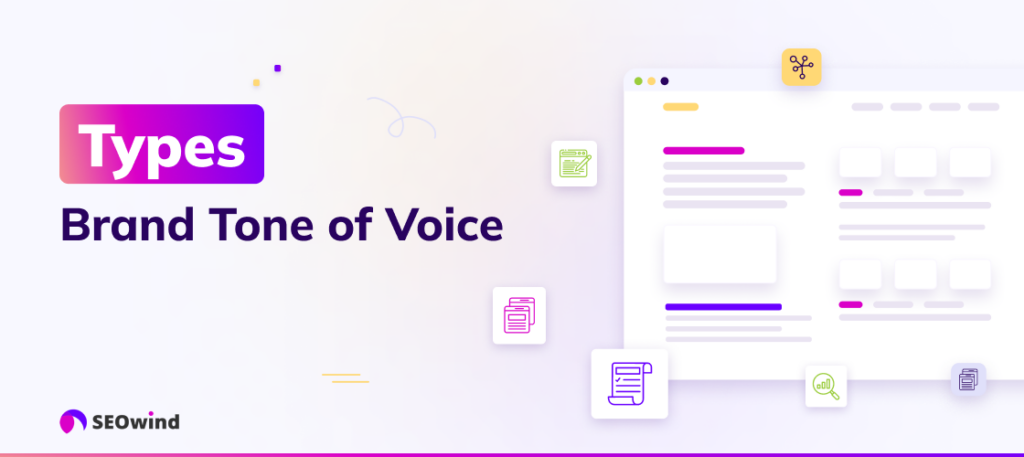
There isn’t a distinct set or categorization for brand voices. It is highly subjective and can be as diverse and nuanced as human voices. However, several brand voice archetypes have been established to achieve strategic comprehension within marketing sectors.
Considering the importance of a well-crafted tone of voice in strategic content creation, Nielsen Norman Group developed a specialized tool to simplify the creation of tone profiles. Their research led to the identification of four critical dimensions in the tone of voice.
One, they identified a spectrum ranging from “Funny” to “Serious.” This refers to whether the writer is attempting to inject humor into the content or approaching the topic with solemnity. It’s important to remember that this dimension considers only the effort to utilize humor, not whether such attempts at humor are successful.
The second dimension is “Formal versus Casual.” It assesses whether the writing style is formal, casual, or somewhere between. Notably, casual and conversational styles could overlap but are not synonymous.
Thirdly, the researchers identified a “Respectful versus Irreverent” dimension. Does the writer treat the topic respectfully or adopt an irreverent stance? Typically, irreverent tones aim to differentiate the brand from its competition and are usually not intentionally disrespectful or offensive to the reader.
Finally, “Enthusiastic versus Matter-of-fact” forms the fourth dimension in the tone of voice. This involves assessing whether the writer or organization seems passionate about the subject, service, or product. Alternatively, does the writing style have a dry, direct, factual tone?
It should be noted that a piece of writing does not have to fall squarely on any one extreme of these dimensions. Instead, each website’s tone of voice can be represented as a point within the four-dimensional space defined by these variables.
Brand Voice Examples

Understanding the concept of brand voice can be significantly smoothed by examining concrete examples. We’ll closely examine three distinct brands and how they effectively employ their unique voice to connect with consumers and stand out. Remember, your brand voice is essential in conveying your business ethos and persona.
Mailchimp: A Friendly and Approachable Voice
Mailchimp is a marketing automation platform with a distinctly refreshing tone. They use simple, familiar language and maintain a conversational tone throughout their communications. Their brand voice is friendly, informal, and approachable, akin to talking to a good friend who knows a lot about email marketing. It’s unpretentious and sometimes even playful, following their philosophy of “empathetic interactions”. This has helped them to not intimidate their users, who range from absolute beginners to marketing pros. Their voice plays a major part in making the process of email marketing seem attainable, even fun.
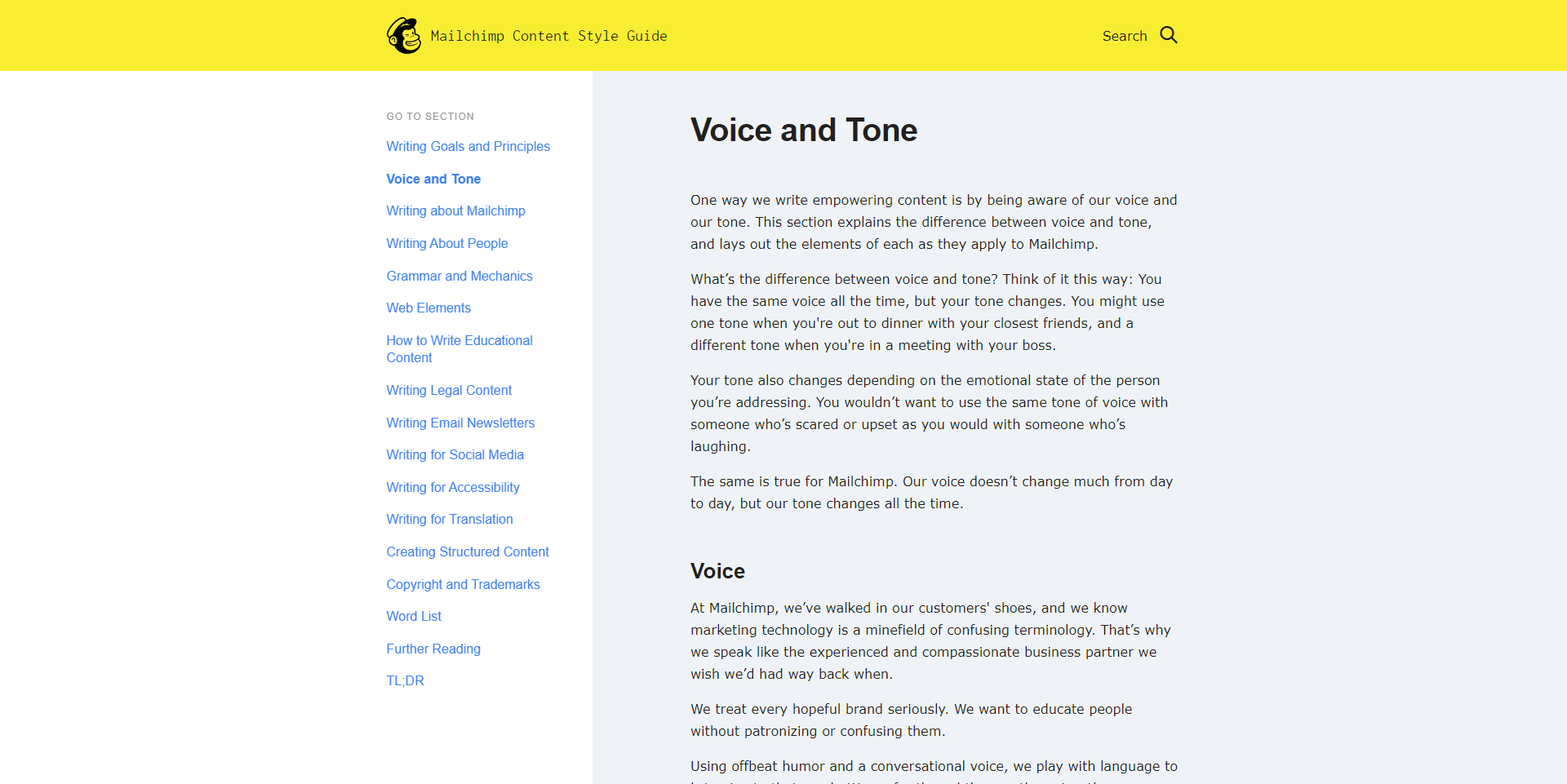
Source: https://styleguide.mailchimp.com/voice-and-tone/
Harley Davidson: A Tough, American Voice
Harley Davidson is a brand whose voice is as distinctive as the rumble of its engines. It’s a tough, proud, all-American voice that communicates a spirit of freedom and rebellion. In their communications, they emphasize the heritage of their brand and the classic, timeless quality of their motorcycles. They address their audience as ‘outlaws’ and ‘rebels’, which mirrors their freedom-loving, rule-breaking brand persona. The brand aims to convey a sense of belonging to an exclusive club that is connected through a shared spirit of independence, adventure, and rebellion, which certainly resonates with its target audience.
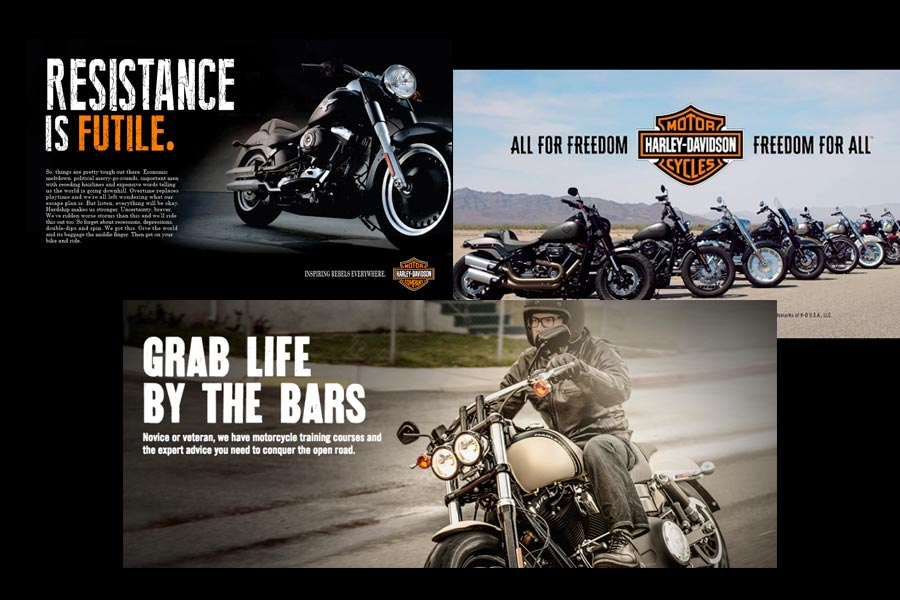
Innocent Drinks: A Witty & Youthful Voice
Innocent Drinks, a UK-based brand, has attracted fandom not just for their healthy beverages, but for their quirky, witty, and honest brand voice. Their tone is always warm, enthusiastic, and youthful, an extension of their mission to make natural, tasty food. They’re known for their clever puns, funny repartee, and silly jokes, making sure their brand feels friendly and welcoming. Innocent’s voice and tone keeps their audience entertained, humanizes the brand, and creates a unique and memorable communication style that sets them apart in their industry.

These paradigms illustrate how different tones of voice can evoke various audiences’ emotions while staying true to branding tone standards. This leads us back to our initial premise: curating a potent concoction of consistency between the voice brand and target demographics’ expectations is paramount for formulating loyalty bonds.
The above examples uncover the adoption of distinctive brand voices across varying industry spectrums, each echoing organizational core values while scripting corresponding narratives with utmost precision and care.
Different Tones of Voice
Understanding the many voice tones at your disposal enables you to match them effectively with your brand’s personality. The tone of voice types, from formal to casual and everything in between, provide a rich palette of emotional tones from which you can find your distinctive hue.
Fundamentally, the tone in advertising is typically categorized into four primary classes: professional, personal, humorous, and passionate.
Professional: This tone exudes authority and speaks directly about your expertise in the field. It’s used frequently by B2B organizations or brands with complex product offerings. It is an excellent method to convey essential features and benefits while portraying reliability.
Personal: An informal, conversational style helps create an engaging and friendly environment for your audience. Brands in fashion, beauty, or any niche targeting millennials often use this style to invoke familiarity.
Humorous: Many businesses excel by incorporating humor into their narratives. Witty social media posts or amusing ad campaigns tend to grab viewers’ attention remarkably well if employed subtly. The audience enjoys a positive tone and a cheerful tone. But remember, it’s critical to exercise caution to avoid offending or turning away audiences with over-the-top humor that might feel forced.
Passionate: If your brand cares deeply about a particular cause or mission, say environmental protection, a passionate tone could be compelling. Passionate voice branding allows you to connect with like-minded consumers on an emotional level.
Your choice among these tones of voice depends greatly upon considerations such as the nature of your products/ services, target demographics, marketing objectives (branding tone of voice), and much more. Remember though – each type has a unique power in connecting with audiences; hence striking a balance might sometimes prove beneficial! Successful brands masterfully blend tones per situational demands without losing sight of their core identity.
However, these are just broad categories within which numerous sub-tones exist. A vital step towards dialing down on the perfect ‘voice’ involves exploring other factors besides mere ‘tone.’ Comprehensive branding efforts need to consider linguistics (the words we decide), pace (how fast/slow we talk) plus rhythm (the pattern), etc., altogether a powerful way of setting what is known as our TOV meaning in marketing.
Tips for Crafting Your Brand Tone of Voice

Crafting your brand tone of voice is not a task to be taken lightly. After all, it’s the audible expression of your brand identity – impacting everything from voice marketing to social media communication. Here are some valuable tips to help you define and refine your ‘brand guide tone of voice.’
- Understand your audience: The first rule in developing a tone brand is understanding who you speak to. Tailoring your tone to match your audience’s preferences enhances connection and facilitates better engagement.
- Embrace authenticity: The uniqueness of your brand lies in its authenticity — it differentiates your brand from competitors! An authentic ‘voice branding’ resonates with customers and helps foster trust.
- Consistently utilize the chosen tone: Having picked a ‘tone in advertising,’ maintain consistency across all platforms, whether on your website, social media, or emails.
- Use language that reflects company values: What represents you best? Professionalism, playfulness, elegance, or perhaps sophistication? Let this radiate through the choice and manipulation of words.
- Keep evolving based on feedback & trends: Be ready to adapt the branding ‘tone of voice’ as per feedback coupled with market or industry trends to keep it fresh and relatable.
Remember, while drafting the right’ branding tone of voice’ can feel overwhelming initially, patience and keeping an open mind will pave the way towards finding that harmonious blend between brand core values, customer expectations, and market dynamics.
What to Avoid in Your Brand Tone of Voice
It’s common for brands to falter when establishing their tone of voice. A slight misstep can lead their audience astray or confuse the intended message. Thus, it is important to be aware of and avoid common pitfalls.
The ‘voice refers to’ a claim without substance: Having and communicating a solid brand voice involves much more than issuing claims about your values or intentions — it necessitates meaningful action that reflects those assertions. A disconnection between what a company says (tone of voice) and what a company does (brand behavior) can breed customer mistrust.
Overdoing jargon: While industry-specific terminology may be required in some contexts, going overboard with jargon might alienate your target audience. Keeping the language simple and accessible fosters better communication and comprehension.
An inconsistent tone: Even if your business adopts different tones for varying scenarios, an underlying consistency should always reflect your core values. Inconsistency can create forms of cognitive dissonance amongst your audience.
Ignoring feedback: Ignoring feedback from customers regarding how they perceive your brand tone is ill-advised. Active monitoring should be undertaken to gauge resonance with the audience and make necessary revisions based on their responses.
A standing rule that cuts across these points – clarity trumps cleverness every time you define your brand’s tone of voice. Being clever might initially earn you a few brownie points for creativity, but losing clarity in the process will always cause long-term harm.
Remember, people are drawn towards authentic expressions that resonate personally with them—no amount of marketing gimmicks or clever ploys can replace genuine interaction built on trust, respect, and a sense of understanding. Tread lightly while finding the right balance as you work toward solidifying your unique brand tone of voice.
Creating a Communications Document
Emphasizing the brand tone of voice, crafting an effective communications document becomes integral. This strategic manual reflects your company’s identity and serves as an enforceable guideline across all forms of communication.
Understand its Importance
To begin with, recognize the pivotal role of a communications document in firming up your brand voice and maintaining consistency. It acts as a compass for everyone involved in content creation, guiding them toward constructing on-brand messages.
Every team member—be it the copywriters painting compelling narratives or marketing professionals pushing sales through persuasive ad scripts—should refer to this guide. Not just internally, even agencies you collaborate with can leverage this resource to ensure their outputs align with your brand tone.
Identify Key Components
A comprehensive communication document comprises:
- Brand’s Core Values resonate deeply with your brand’s beliefs.
- The tone of Voice: Define this precisely, portraying a brand image that syncs well with your core values.
- Language & Vocabulary Guidelines: Detail preferred phrases and words and sample sentences providing clearer context.
- Grammar & Style Details: Opt for specific stylistic rules that encourage an accurate representation of your brand personality.
To illustrate further, if your business aims at creating an ‘easy-going’ and ‘friendly’ image through voice branding, use casual language over formal jargon.
Adding ‘dos and don’ts’ and listing practical examples covering varied scenarios helps people understand these concepts better. If necessary, incorporate any social media voice or tone in advertising guidelines.
Ensure Easy Accessibility
The functionality of such a repository magnifies when easily accessible. An overlooked folder in the shared drive can hardly serve its purpose! Better management implies frequent usage leading to an improved alignment between various communications and the overall brand tone.
Keep it Dynamic
Remember, while establishing consistency is essential, encapsulating changes evolving within your market scenario is equally important. Regularly monitor and review how effectively your current strategies serve the end goal – a solid online presence through an influential brand tone of voice. Ease down complexities if need be because simpler guidelines lead to easier implementations, ensuring broader adoption rates within teams.
Yes, indeed- painstaking but rewarding, nevertheless! The transition from planning stages to action requires strategic efforts to deliver a consistent feel across all touchpoints within customer journeys while reflecting the true essence of your unique story, resulting in noticeable differentiation in marketplaces!
The Role of Humor in Brand Tone of Voice
If there’s one magical ingredient that breaks the ice even with a passive audience, it’s humor. A brand’s clever utilization of humor can create unforgettable moments and make personal connections, further modernizing the voice marketing strategy.
Humanizing Connection Through Laughter
There’s truth to the adage: ‘Laughter is universal.’ Incorporating humor into your tone of voice branding creates a connection, as humans are naturally social creatures who thrive on laughter. According to a study published by No Laughing Matter: Patterns of Humor in the Business Context, shared emotion can bring about solidarity between people, making them more receptive and open.
Utilize Humor Effectively but Sensibly
Remember that humor must be applied judiciously before incorporating jokes or witty remarks into your brand voice guide template. Certain subjects should not be used for amusement as they could be insensitive. Consistently ensure the humor aligns with your core values without crossing boundaries.
Maintaining Professionalism
Striking a balance between professionalism and mirth constitutes most of any successful humorous tone of voice brand campaign. Companies like Innocent Drinks and Old Spice have capitalized on this – making themselves approachable via engaging content without sacrificing competence.
Result-Oriented Approach
According to Sprout Social, humor done right often results in increased engagement rates, return customers, and effective breakout from competitive clutter in an individual’s feed space. But humor shouldn’t just be included for laughs; it has to reinforce your message or serve some strategic purpose.
Consider these aspects carefully when considering weaving a humorous spin into your company’s narrative. After all, your ultimate aim is strengthening brand identity while simultaneously appealing to customer sensibilities.
Storytelling and Brand Tone of Voice
Nothing brings the notion of brand tone of voice to life more vibrantly than its use in storytelling. As a vital tool within the marketing arsenal, storytelling allows brands to connect with their audience on an emotional level, using narrative constructs that resonate appealingly with them. Here, your carefully crafted tone of voice becomes helpful and critical.
Engaging narratives humanize your brand and make it relatable, crucial for establishing trust. Your brand tone significantly shapes those stories, allowing you to articulate them convincingly and consistently. For instance, if your brand values innovation and entrepreneurship, your stories must echo this spirit – all underscored by a forward-thinking ‘tone of voice brand.’
The challenge lies in maintaining a defined and consistent tone across all storytelling—from website content to social media posts. Take as inspiration some examples of ‘social media tone of voice’ where brands utilize tones consistent with their overall branding approach. This unequivocal consistency fortifies your brand story and makes it uniquely identifiable amidst competitors.
However, don’t forget the power dynamic shift towards consumers today—they want brand authenticity besides engaging stories. Consequently, your tone must mirror truthfulness, too; overly ambitious promises or exaggerated tales could tarnish your credibility.
Remember:
- Consider what kind of ‘voices’ will tell your story best – do you need varying ‘types of brand voices’ or one unifying note?
- Every story segment should unanimously reflect the same brand ideologies irrespective of the platform, and you should be adept at carrying over your logo’s promise into worded expressions.
- Keep monitoring feedback and interactions—the audience often signals when they perceive dissonance between cause and expression.
In essence, compelling storytelling enhanced by consistent brand voice cultivation heightens emotional connections with customers—keeping them invested in recounted tales and associated products/services.
Implementation & Governance
Diligent governance is paramount when it comes to successfully implementing an effective brand tone of voice. Navigating this process encompasses more than crafting creative and endearing expressions for your brand. It involves establishing well-defined systems that ensure consistency across all communication channels.
Enforcing your brand tone of voice guidelines should be comprehensive but flexible as markets evolve. Below are some strategies on how this can be achieved effectively:
- Establish Accountability: Assign specific team members responsible for upholding your brand’s voice principles. This ensures adherence to the set tone in advertising and various communication platforms, such as social media.
- Consistent Training: It is crucial to ensure that everyone in your organization deeply understands your brand voice. Regular training sessions will achieve this while reinforcing its importance in marketing initiatives.
- Internal Audits & Reviews: Conducting timely audits will help identify any inconsistencies or deviations from the established brand tone of voice across different channels, such as the website, email newsletters, blogs, etc.
- Continually Adapt and evolve: The last tip I have for implementing a solid brand governance strategy may seem paradoxical: remain flexible! Even though preserving consistency with your established branding tone of voice is essential, it must evolve with market shifts and customers’ changing perceptions.
Implementing a new ‘voice’ can certainly present challenges initially; therefore, working closely with internal stakeholders is critical. Collaborative efforts lead to a consistent application and seamless adaptation of the chosen voice tones.
In conclusion, remember that maintaining a successful brand tone requires ongoing effort and commitment from every corner of your organization – much like keeping up with dance choreography!
Remember that setting up robust governance allows for easier benchmarking against competitors and provides clear direction for all involved parties regarding what constitutes acceptable communication pieces when using different tones of voice types.
Balancing these factors cautiously will undoubtedly pave the way to successfully governing and implementing an effective, “sounding” presence that is true to our defined tone.
AI content and brand voice
One of the most common issues with AI content is making it sound like you. Below is a three-step process that makes this possible.
